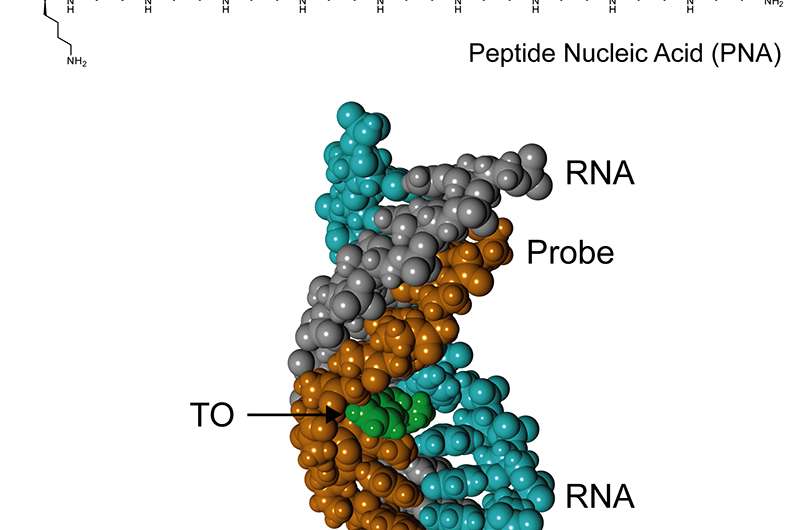New analytical tool for fluorescence detection of double-stranded RNA

Ribonucleic acid (RNA) binding fluorescent probes have been powerful and important analytical tools for the study of RNA structures and functions.
A research group led by Professor Seiichi Nishizawa at Tohoku University's Graduate School of Science has reported a new RNA probe that binds to double-stranded RNA (dsRNA) in a sequence-specific manner.
A fluorescent dye, thiazole orange (TO), is added to peptide nucleic acid (PNA). The probe exhibits a remarkable light-up response upon binding to the dsRNA by triplex formation (Figure 1).
The probe has a weak response to mismatch-containing dsRNA sequences, thus enabling sequence-selective fluorescence sensing of dsRNA at the single-base pair resolution. It also shows a preference for binding with dsRNA over dsDNA, which is an important selective process for future applications in a cellular environment where RNA and DNA co-exist.
In contrast to the conventional analytical method which is limited to single-stranded regions of RNA, the new analytical method allows for fluorescent sensing of target dsRNA structure and sequence for the first time.
It is expected that the probe will open up new possibilities for analyzing the functions of dsRNA-containing structures, which are closely related to various biological phenomena and diseases.
More information: Takaya Sato et al, Triplex-Forming Peptide Nucleic Acid Probe Having Thiazole Orange as a Base Surrogate for Fluorescence Sensing of Double-stranded RNA, Journal of the American Chemical Society (2016). DOI: 10.1021/jacs.6b05554
Journal information: Journal of the American Chemical Society
Provided by Tohoku University
















